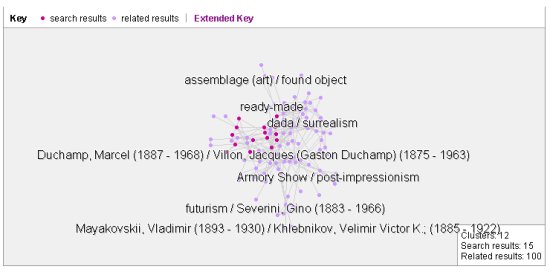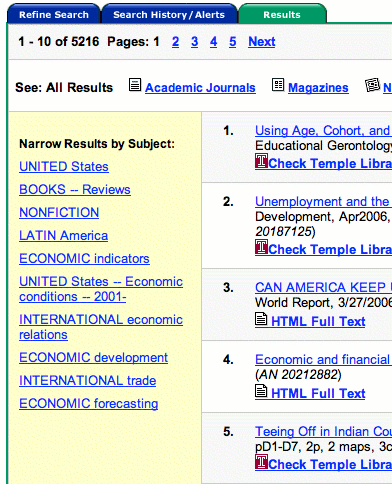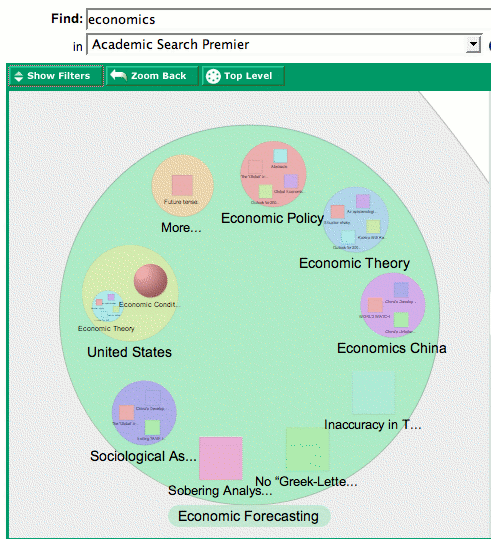One of the library’s latest purchases is xreferplus, a collection of over 200 reference books in electronic form. This full-text searchable collection is cross-referenced between the sources, allowing users to move not only within books but between books and disciplines. The included sources are in a variety of subjects: Art, Bilinguals, Biography, Business, Conversions, Dictionaries, Encyclopedia, Food, Geography , History, Language, Law, Literature, Medicine, Music, Philosophy & Psychology, Quotations, Religion, Science, Social Sciences, and Technology. And come from publishers such as Barron’s, Blackwells, Cambridge, Cassel, Columbia, Elsevier, Penguin, Routledge, Sage, Gale, and Wiley. See a list of all the included books.
The advanced search allows limiting a search to longer articles on subjects as well as articles that contain images or sound files. Each entry also includes a citation for itself in MLA, APA, and Chicago styles. The special visual search option called a “Concept Map” graphically represents the connections between different articles and sources. The image below shows the beginning concept map for a search on “Duchamp.” Even at this level one can see the connections made from Duchamp (the artist) to other artists, art movements, and art concepts.

Each node on the map represents an article in the xreferplus collection. The interface allows users to zoom in on parts of the map and more directly see the connections between the nodes. xrefeplus is a valuable resource for quick answers, general overviews of a topic, and students beginning research and looking to better negotiate their topic. If you have any questions, feel free to direct them to me or your librarian of choice.




